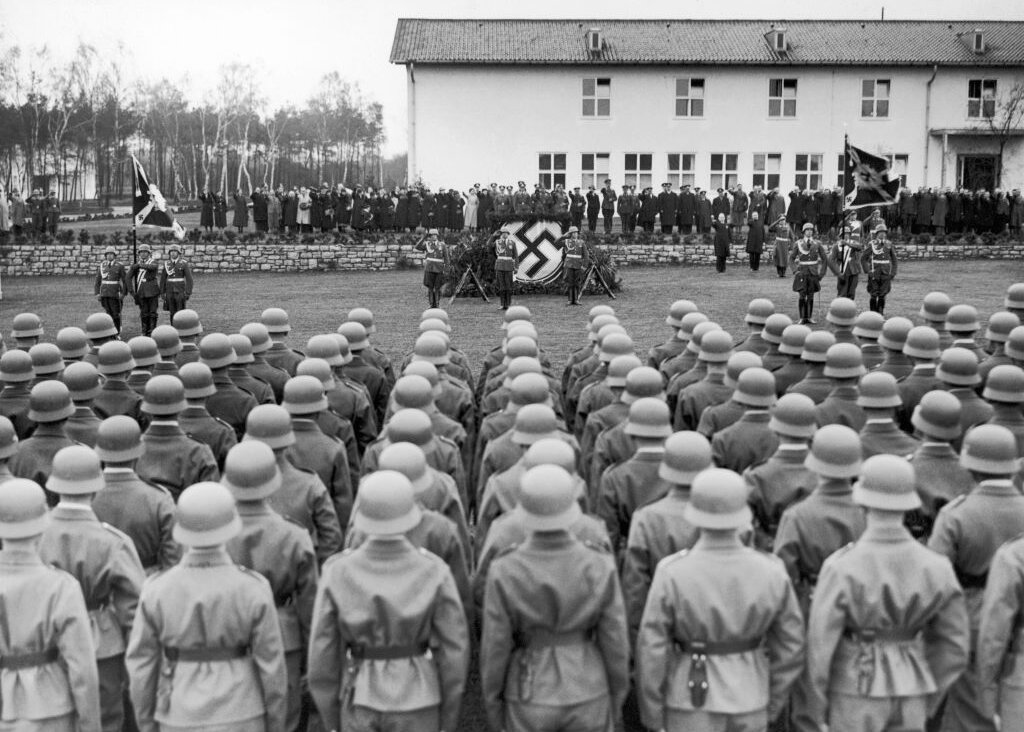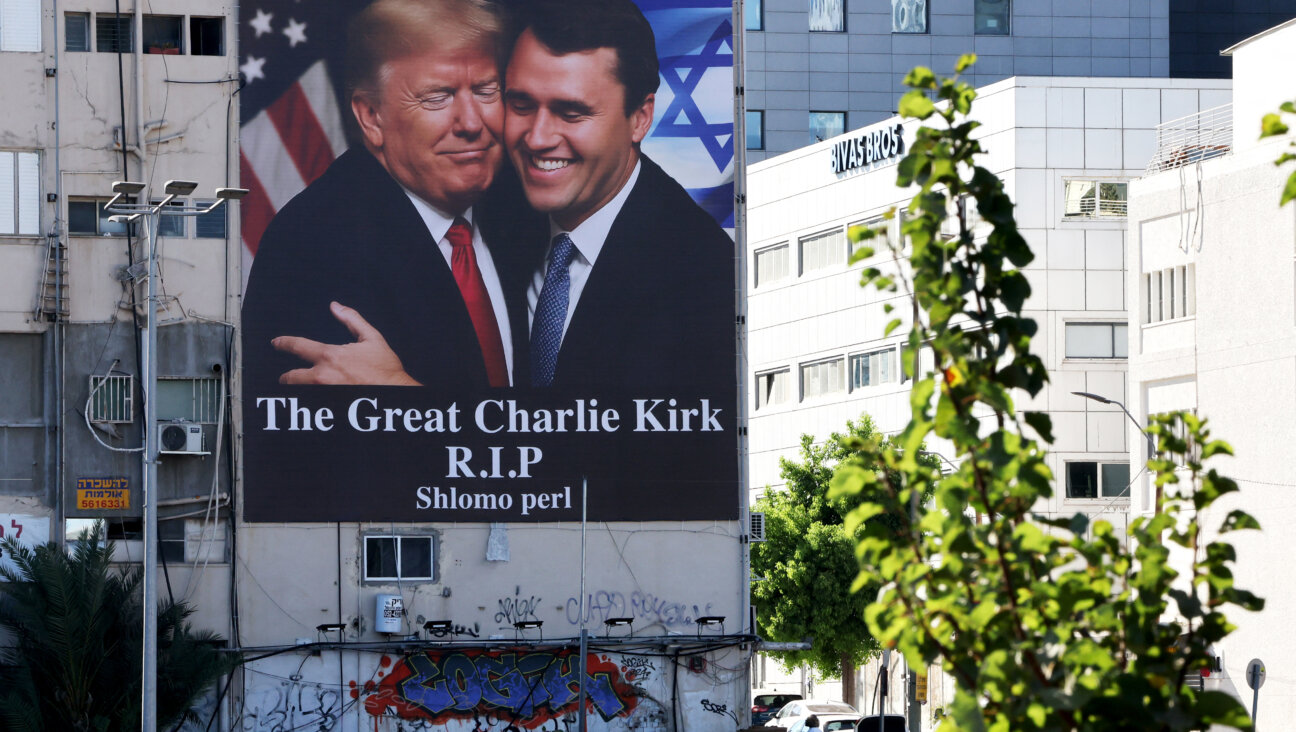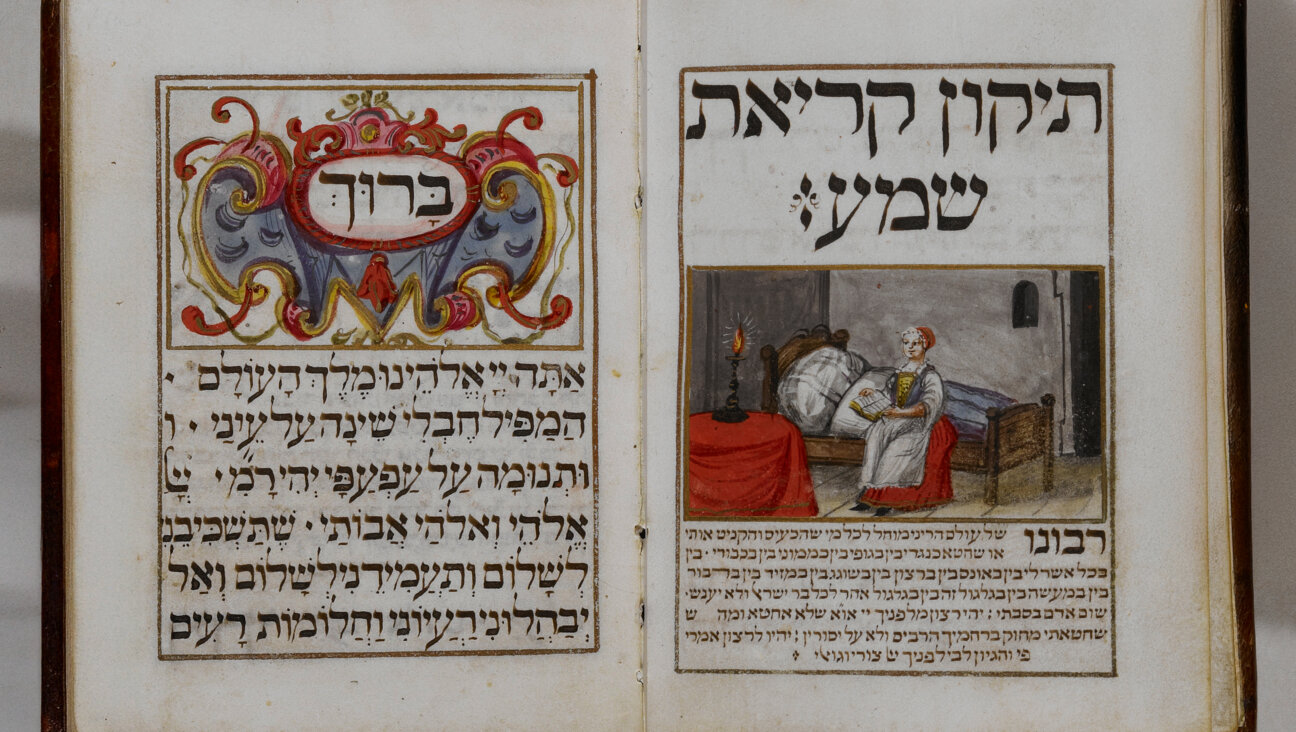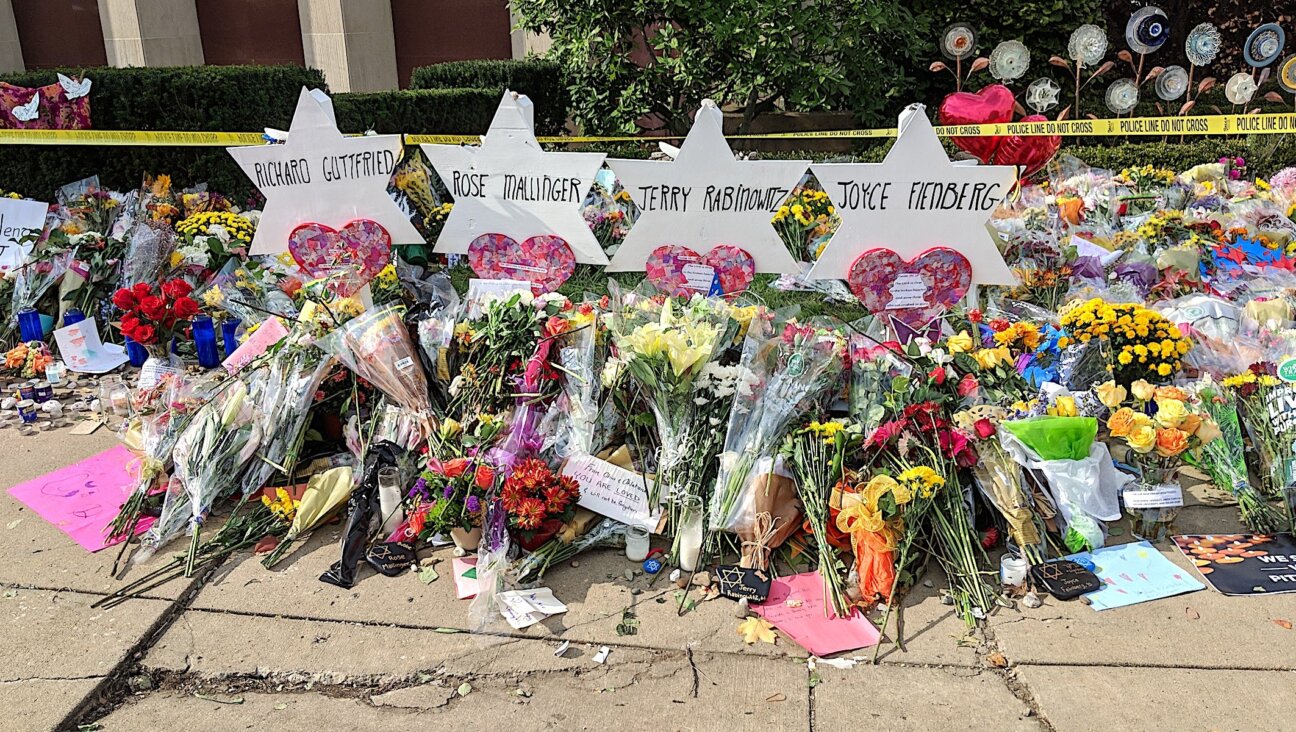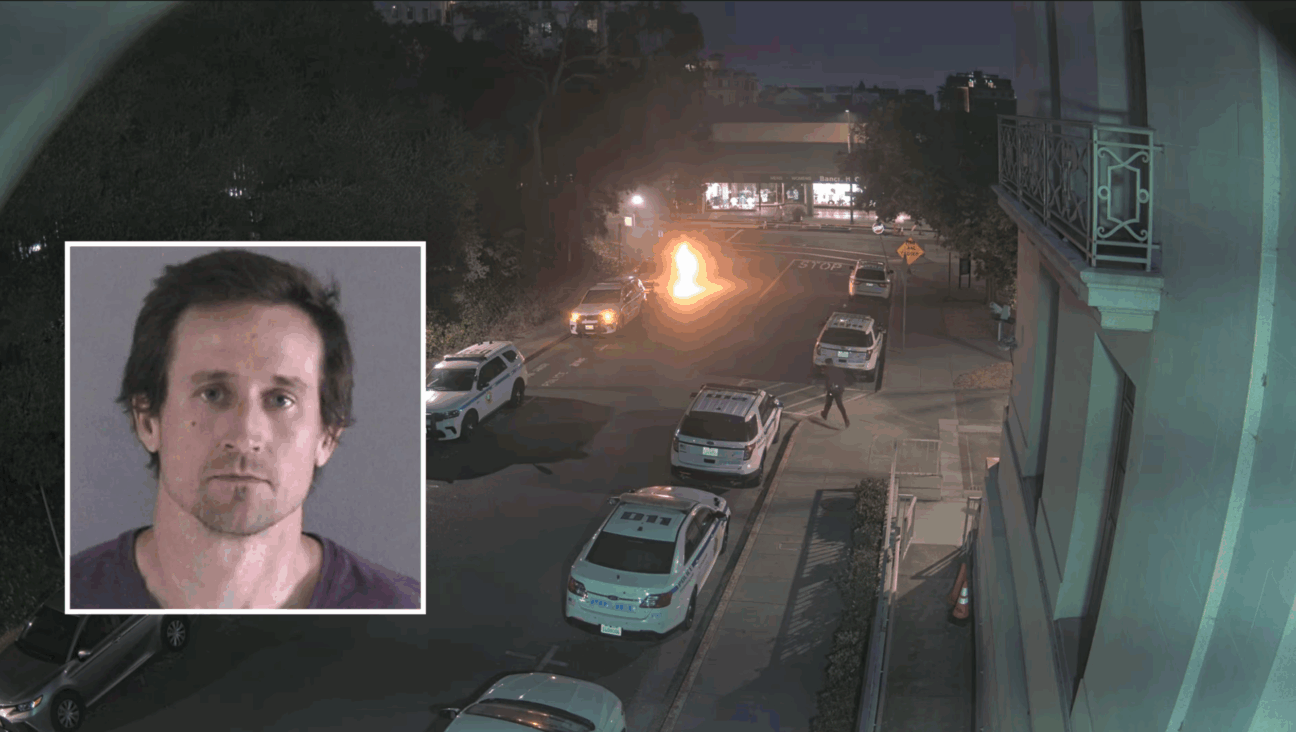Israel and Palestinians Locked in Vicious Circle of War, Terror and Occupation

Image by getty images
Sign up for Forwarding the News, our essential morning briefing with trusted, nonpartisan news and analysis, curated by Senior Writer Benyamin Cohen.
When Israel ended its 38-year ground occupation of the Gaza Strip by withdrawing settlers in 2005, then-Prime Minister Ariel Sharon hailed it as a “disengagement” from conflict with Palestinians in the densely populated coastal enclave.
But the conflict did not end, it only changed.
Israel kept expanding settlements in the West Bank where the Palestinians also seek a state. Hardline Islamists seized control of Gaza in 2007 and periodic U.S. efforts to broker a permanent peace between Israel and the Palestinian Authority under secular President Mahmoud Abbas have proved fruitless.
In the diplomatic vacuum, confrontation has festered.
Israel sealed Gaza in an economically choking blockade and the territory’s ruling Hamas movement and other militant factions fired rockets with increasing frequency and range, though not accuracy, into the Jewish state.
Israel in turn has bombarded Gaza countless times from the air and sent in armored columns on occasion to ferret out and destroy rocket batteries and tunnels used to smuggle in arms from Egypt or infiltrate Israel for guerrilla ambushes.
Mediated ceasefires under which Israel pulled out forces and rocket fire abated brought periods of relative calm, only for the two sides to relapse into bouts of bloodshed.
Conflict management has won out over peacemaking.
Israel’s current Gaza incursion, in which it aims to cripple the Hamas rocket and tunnel threat before Western opprobium over a soaring Palestinian civilian death toll boils over and forces it to pull back, echoes past offensives since 2007.
At least 1,390 Palestinians had been killed in three weeks, mostly civilians in packed urban areas hammered by Israeli air strikes and shelling. The scale of destruction of Palestinian housing and infrastructure is greater than in past offensives.
Israel has lost 56 soldiers and three civilians hit by cross-border rocket fire.
As in previous Gaza wars, the toll of death and destruction has been lopsided because of Israel’s huge superiority in state-of-the-art firepower and its Iron Dome missile defense shield, which has shot down most rockets streaking towards its cities.
But the broader strategic environment has changed, making it harder to prod Israel and Hamas into downing their weaponry.
Hamas feels cornered by its rift with Syria, cooler ties with Iran and the toppling of its Muslim Brotherhood patrons in Egypt. Israel, having spurned U.S. peacemaking efforts as ties with Washington turned frostier than for many years, has vowed a long battle if necessary to neutralize its Gaza adversary.
Unlike in the 2008-09 Gaza war, there has been no serious world pressure – beyond mild rebukes and U.N. remonstrations – to end the hostilities. The United States and the main European countries have underlined “Israel’s right to defend itself”.
Major powers are distracted and divided by other crises over Russia’s role in Ukraine, reawakening old Cold War antagonisms, and the stunning advance of jihadi insurgents in Iraq and Syria.
Middle East power brokers are polarized over how to stop the region’s descent into disorder after “Arab Spring” revolts that overthrew long stable autocratic regimes.
Gaza truce talks are further complicated by the fact that Israel and the United States ostracize Hamas as a designated terrorist group that refuses to recognize Israel’s right to exist, while the intermediaries – Egypt, Qatar and Turkey – disagree over how much leeway to grant to Islamists.
Following is a comparison of the current Gaza conflict with two previous major outbreaks of war since 2007.
DECEMBER 2008-JANUARY 2009
In what became the most deadly and destructive conflict over Gaza since Israel captured the desert enclave in the 1967 Middle East war, the Israelis launched air strikes and artillery barrages on Dec. 27 and invaded with tanks and troops on Jan. 3.
The stated goal was to stop Islamist rocket fire into Israel and destroy cross-border tunnels used by militants to smuggle in arms from Egypt and stage ambushes inside the Jewish state.
The Palestinian death toll was 1,417, more than half of them civilians. Thirteen Israelis, 10 of them soldiers, were killed.
Israeli forces targeted Hamas bases, training camps and security premises. Civilian infrastructure including mosques, houses, medical centers and schools were also hit as alleged militant hideouts. Hamas rocket salvoes reached farther than before, hitting cities like Beersheba and Ashdod.
Israel declared a unilateral truce on Jan. 17 and Hamas, Islamic Jihad and other smaller militant factions followed suit a day later. The last Israeli forces left Gaza on Jan. 21.
Both sides claimed victory. Rocket fire from Gaza was reduced, though not eliminated. Israel’s reputation, however, took a heavy hit with widespread criticism of the large number of civilian casualties and severe damage to Gaza infrastructure.
A U.N. fact-finding mission led by South African judge Richard Goldstone accused both Israel and Gaza militants of war crimes and possible crimes against humanity over alleged targeting of civilians and using them as human shields.
Israel refused to cooperate with the inquiry and denounced its conclusions as biased and flawed.
NOVEMBER 2012
Israeli forces stormed into Gaza on Nov. 14 after tit-for-tat clashes including an ambush of an Israeli border patrol and the killing of Hamas’s military commander in an air strike.
A U.N. Human Rights Council report said 174 Palestinians were killed in three weeks of fighting, 107 of them civilians. Six Israelis were killed, four of them civilians in rocket fire on towns near the Gaza frontier.
The Israeli military said it hit more than 1,500 rocket launchpads, weapons depots, Hamas government premises and other targets in Gaza. Hamas and its allies fired rockets at Tel Aviv, putting Israel’s main city under air attack for the first time since 1991, when Saddam Hussein’s Iraq fired Scud missiles.
Israel said over 400 rockets were intercepted by its Iron Dome shield. Many others landed in uninhabited areas.
A ceasefire was struck on Nov. 21, brokered by Egypt and the United States. Both sides, again, claimed victory. Israel said it had crippled Hamas’s rocket-launching ability while Hamas said Israel’s option of invading Gaza had ended.
JULY 2014
This year’s war was triggered by events outside Gaza. Three Jewish seminary students kidnapped while hitch-hiking in the occupied West Bank were found murdered. Israel blamed Hamas and rounded up hundreds of suspects. In revenge, Israelis abducted a Palestinian youth, killed him and burnt his body.
Palestinian protesters battled Israeli security police in Jerusalem and the West Bank, Gaza militants stepped up rocket fire into Israel – and the war was on.
Israel began by bombarding Gaza targets, launching a ground offensive a week later when Hamas refused to stop firing.
Ground assaults on residential areas, preceded by warnings to evacuate, displaced more than 200,000 of Gaza’s 1.8 million Palestinians. Power and water supplies were crippled.
As before, controversy erupted over alleged indiscriminate Israeli barrages that killed entire families in their homes and hit two schools run by the U.N. refugee agency UNRWA, killing dozens of Palestinians in designated shelters.
U.N. Secretary General Ban Ki-moon condemned the carnage at the schools. U.N. officials in Gaza reported finding caches of rockets inside three other UNRWA schools.
As in the past, Israel said its forces did their utmost to avoid civilian casualties and accused Hamas of putting its people in harm’s way by waging combat in their midst.
The United States and the U.N. Security Council called for an immediate, unconditional ceasefire to allow humanitarian relief and talks on a durable cessation of hostilities.
Washington, however, allowed Israel to tap a local U.S. arms stockpile to replenish grenade and mortar stocks depleted during its offensive, U.S. officials said.
Israeli Prime Minister Benjamin Netanyahu said on Thursday he would accept no truce that stopped Israel completing the destruction of militants’ infiltration tunnels.
Both sides are setting truce terms harder to reconcile than in the past. Israel wants Gaza “demilitarized”, although that would be hard to enforce barring an indefinite re-occupation of the territory. Hamas is demanding an end to the Gaza blockade and the release of prisoners seized in the West Bank.





